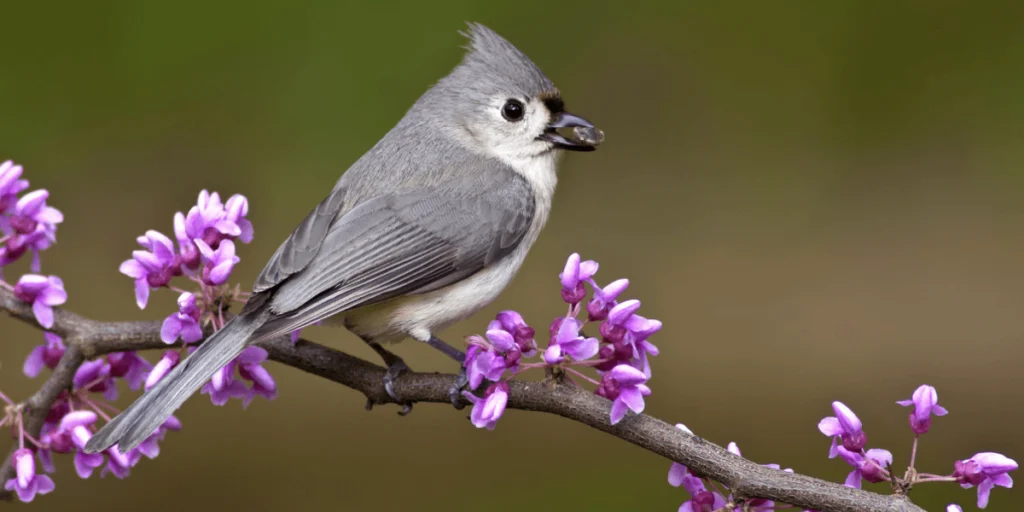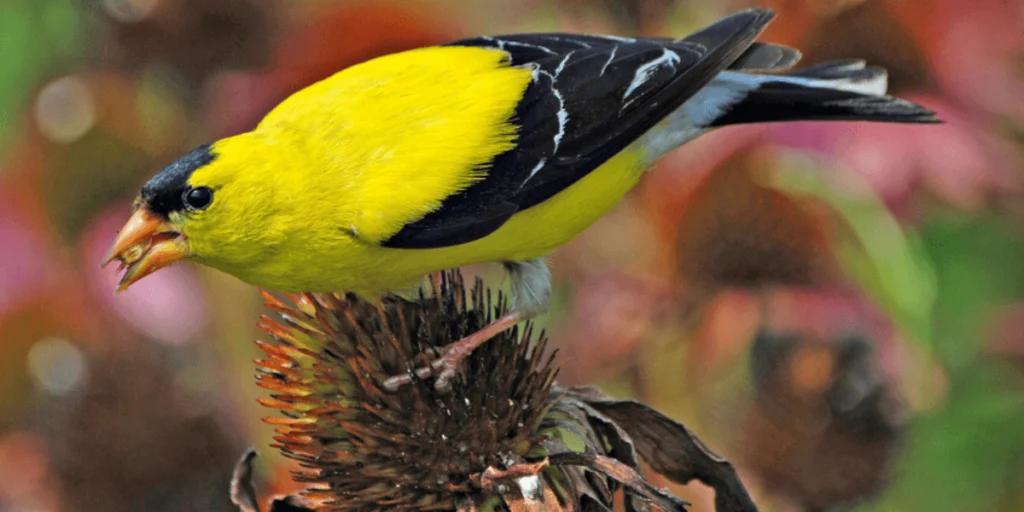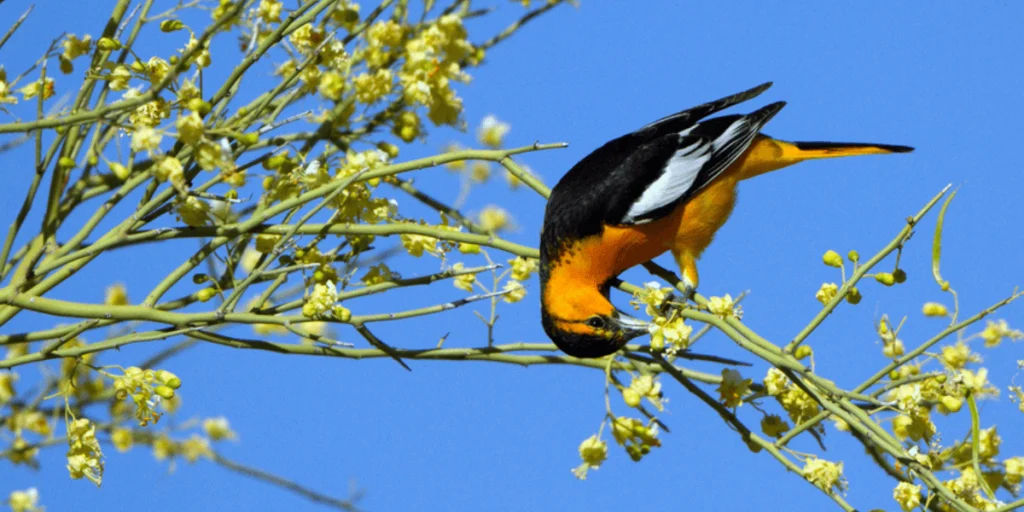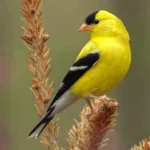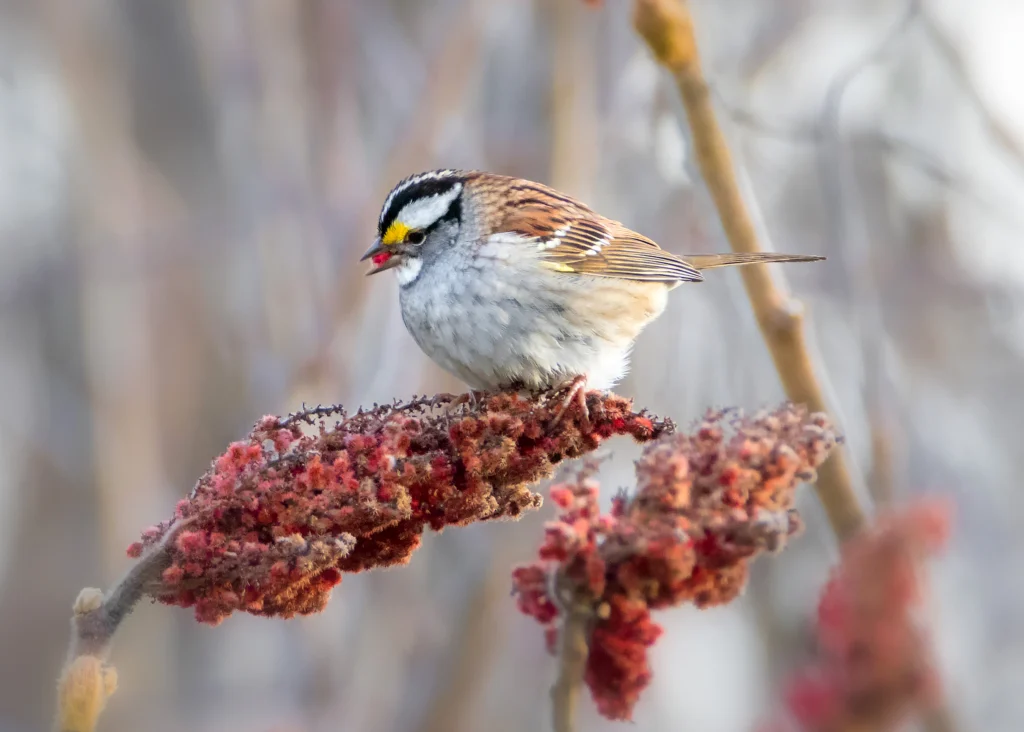Oaks: In his book Bringing Nature Home, Douglas Tallamy writes that “oaks are the quintessential wildlife plants: no other plant genus supports more species of Lepidoptera [butterflies and moths], thus providing more types of bird food, than the mighty oak.” If you have the space, by all means, plant one!
Willows: Weeping willows are non-native, but there are many native willow species, such as black willow and pussy willow. These shrubs or small trees may be found at native plant suppliers. Many moths and butterflies are attracted to these moisture-loving plants, which can be used in borders.
Cherries: Native cherries, such as black cherry and common chokecherry, provide not only food for birds but leaves that feed many types of caterpillars, from the large and striking cecropia moth to the abundant eastern tent caterpillar. Cuckoos, orioles, and many other woodland birds feed on tent caterpillars, while gnatcatchers pull away some of the caterpillar nests’ silk for their own cup nests. (Bear in mind that many commonly available ornamental cherry trees, such as Yoshino cherry, are not native.)
Birches: The complicated, peeling bark shelters many invertebrates, while the leaves attract hundreds of butterfly and moth species. Seeds and buds of these rather small, somewhat short-lived trees attract birds and small mammals. The adaptable river birch is one of our favorites.
Dogwoods: Insects come to the flowers, and birds to the fall berries. There are eastern and western dogwood species, and trees as well as many shrubs, including the lovely-in-all-seasons red-twig dogwood. (Note that flowering dogwood is native, but kousa dogwood is not.)
Hollies: Many of these trees and shrubs are evergreen, providing year-round shelter, nesting places, and berries that ripen late fall or into winter. Choose from trees such as American holly or the deciduous shrub, winterberry. (Although birds love them, remember that holly berries are toxic to humans and pets.)
Elderberry: The elderberries are shrubs or small trees that provide abundant flowers for insects, along with summer berries beloved by people and birds alike. You’ll have to be fast if you want to keep some for yourself!
Mulberry: In summer, birds flock to the fruits, after insects have crowded spring flowers. Choose the native red, not the invasive, introduced white mulberry.
Juniper (including redcedars): These shrubs and trees produce berry-like fruiting bodies and year-round cover. Eastern redcedar fruits are a staple for Cedar Waxwings.
Viburnums: These shrubs grow in the forest understory, attract myriad invertebrates to their flowers and leaves, and produce berries and nesting areas for a wide variety of songbirds. Be sure to choose species native to your area. We particularly like arrowwood viburnum.
Shadbush or Serviceberry: From flowers to fruits to nesting cover, the Amelanchier family offers small trees and shrubs that are among the most popular with wildlife habitat aficionados. There are many species, but it’s hard to beat the tree-sized downy serviceberry for beauty and bird appeal.
Blackberry and Raspberry: Attractive to many insects, these thorny plants also create brambles that provide cover and nesting places, while producing berries in summer. Be careful not to confuse these with the similar, but red-stemmed invasive exotic called wineberry.

